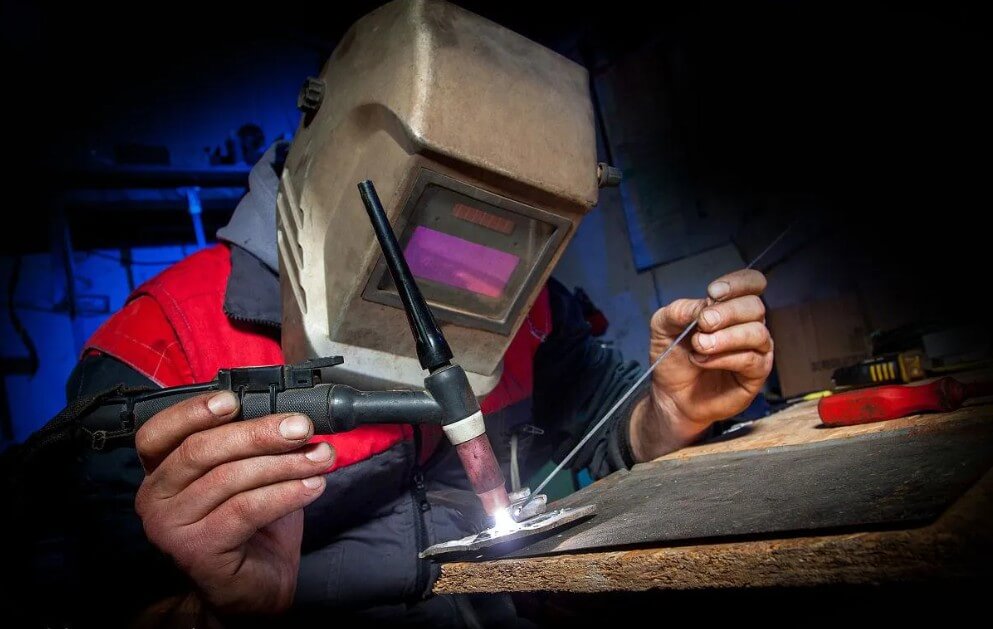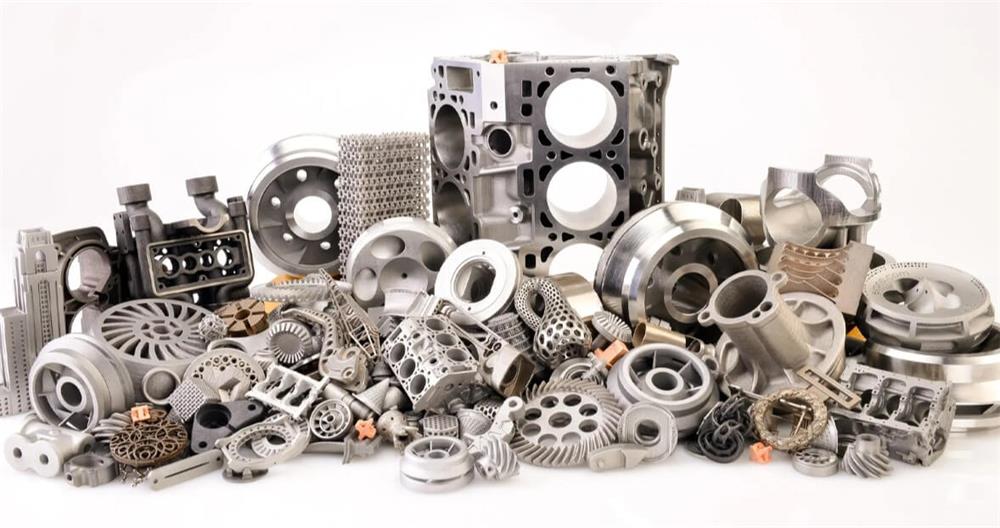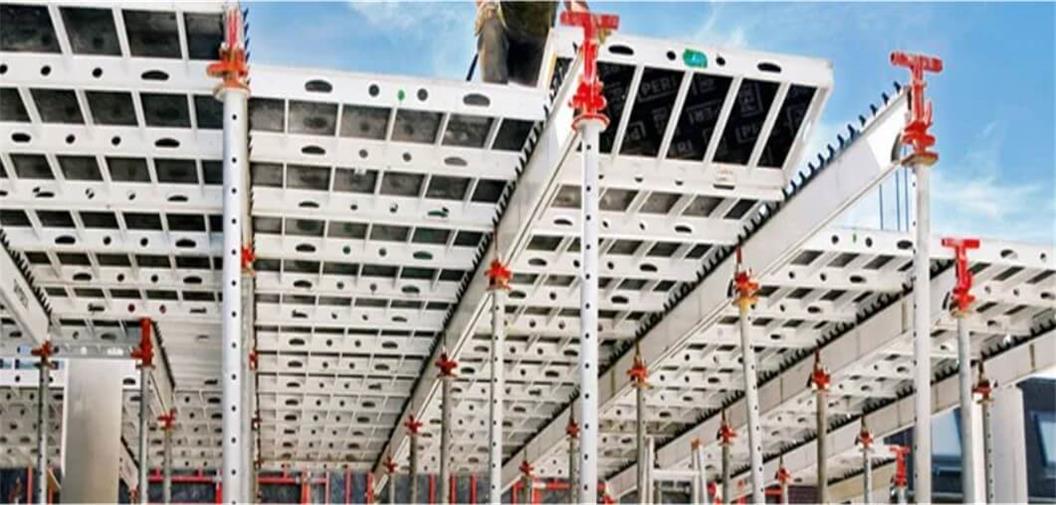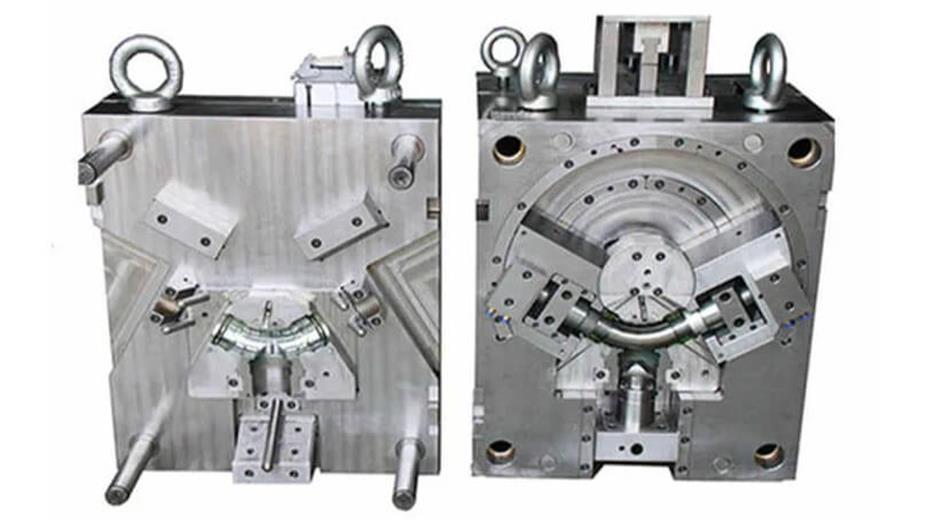Welding cast aluminum: technology, challenges and optimization
Welding cast aluminum is a technology that requires highly professional skills and meticulous operation. Cast aluminum has been widely used in modern industry due to its good thermal conductivity and corrosion resistance. This article will explore the relevant issues of welding cast aluminum in depth, mainly including why cast aluminum should be welded, methods, why it is difficult to welding cast aluminum, where the difficulties are, material and equipment selection, pre- and post-welding treatment, and process optimization solutions.
1.Why welding cast aluminum?
The reasons for welding cast aluminum usually involve multiple aspects, including but not limited to the following:
(1) Structural connection:
Welding is an effective method to achieve connections between cast aluminum parts or between cast aluminum and other materials. Through welding, complex structures and components can be manufactured to meet design and engineering requirements.
(2) Repair defects:
Defects such as cracks and pores may occur in cast aluminum parts during production or use. Welding technology can be used to repair these defects, extend the service life of cast aluminum parts, and reduce costs.
(3) Improve performance:
In some cases, welding can improve the performance of cast aluminum parts. For example, the strength and stability of aluminum castings can be improved by welding reinforcing ribs or using specific welding materials.
(4) Manufacturing complexity:
Welding allows the manufacture of aluminum castings with complex geometries. By welding aluminum castings of different shapes and sizes, design diversity and innovation can be achieved.
(5) Cost reduction:
Welding can reduce the need for integral castings, thereby reducing material costs and processing costs. In addition, welding can also reduce the workload of mechanical processing, further improving economic benefits.
(6) Strong adaptability:
Welding technology can adapt to different production environments and conditions. Whether it is small batch production or large-scale production, welding can provide flexible solutions.
(7) Maintenance and transformation:
Welding technology is also commonly used for the maintenance and transformation of aluminum castings. For example, welding can replace damaged parts or upgrade and transform existing structures.
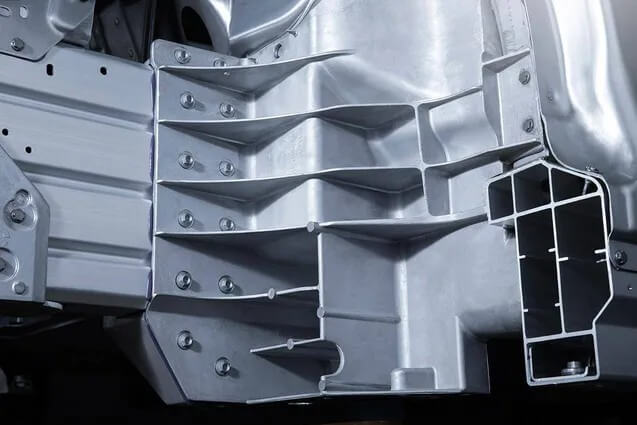
Summary:
In summary, the reasons for welding cast aluminum are mainly to meet the needs of structural connection, repairing defects, improving performance, manufacturing complexity, reducing costs, strong adaptability, maintenance and transformation.
2.Main methods of welding cast aluminum
There are many ways to welding cast aluminum, each with its own unique advantages and scope of application. Here are the main methods for welding cast aluminum:
(1) Tungsten inert gas welding (TIG welding):
This is a commonly used welding method, especially suitable for welding thin cast aluminum. TIG welding uses a non-melting tungsten electrode and argon gas protection, which can produce high-quality welds with little deformation after welding. Due to the protective effect of argon gas, the weld is not easily oxidized, so flux is usually not required. A high level of skill is required during operation to ensure precise control of welding parameters.
(2) Metallurgical gas shielded welding (MIG welding):
MIG welding uses a melting electrode and gas protection and is suitable for welding thicker cast aluminum parts. During the welding process, the welding wire acts as an electrode and is melted into the weld to form a strong joint. MIG welding has high efficiency and fast welding speed, making it suitable for large-scale production. However, due to the large heat input during welding, the problems of weld deformation and heat-affected zone need special attention.
(3) Friction stir welding (FSW):
This is a solid-state welding technology suitable for welding aluminum alloys. Friction stir welding generates heat by friction between the welded parts through a high-speed rotating stirring needle, which plasticizes the materials and connects them together. This method does not require filler materials, shielding gases or flux, and there is no smoke and spatter during welding. The weld quality is high and it is particularly suitable for applications with extremely high welding quality requirements.
(4) Gas welding:
Gas welding is usually carried out using an oxy-acetylene flame and is suitable for small-scale or on-site maintenance work. Gas welding equipment is simple and flexible to operate, but the welding quality is difficult to control and is prone to defects such as pores and cracks. Therefore, gas welding is generally used in applications where welding quality requirements are not high.
(5) Resistance welding:
Resistance welding is mainly used for welding thin-plate cast aluminum. Pressure is applied to the electrode and electricity is applied, and resistance heat is used for welding. Resistance welding has high efficiency and is suitable for mass production, but the equipment cost is high and the welding thickness is limited.
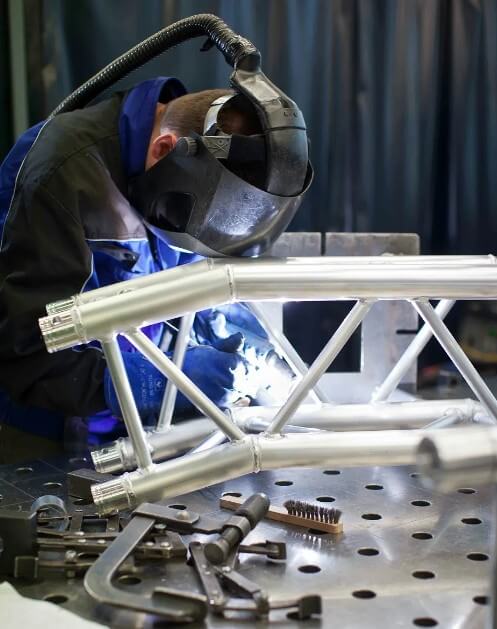
Summary:
When choosing a welding method, it is necessary to comprehensively consider factors such as the thickness, structural form, welding quality requirements and production efficiency of cast aluminum. Before welding cast aluminum, it is also necessary to carry out appropriate surface cleaning to remove oxide film and impurities to ensure welding quality. Post-weld treatment, such as cleaning welds and checking quality, is also an important part of ensuring welding results.
3.Why is it difficult to welding cast aluminum?
The reason why welding cast aluminum is difficult is mainly because aluminum alloy materials have the following characteristics:
(1) Very easy to oxidize:
Aluminum easily combines with oxygen in the air to form a dense aluminum oxide film. The melting point of this oxide film is as high as 2050℃, which is far higher than the melting point of aluminum and aluminum alloys (about 600℃). During welding, the refractory oxide film will hinder the fusion of the filler metal and the base material, resulting in oxide inclusions.
(2) Porosity:
The main reason for the formation of pores when welding aluminum and aluminum alloys is hydrogen. Since liquid aluminum can dissolve a large amount of hydrogen, while solid aluminum hardly dissolves hydrogen, when the molten pool temperature cools and solidifies rapidly, hydrogen has no time to escape and is easy to gather in the weld to form pores.
(3) The weld is prone to deformation and crack formation:
The linear expansion coefficient and crystallization shrinkage rate of aluminum are about twice that of steel, which is easy to produce large internal stress of welding deformation, which will promote the formation of thermal cracks for rigid structures.
(4) The thermal conductivity of aluminum is large:
It is about 4 times that of steel. Therefore, when welding aluminum and aluminum alloys, more heat is consumed than welding steel.
(5) Evaporation and burning of alloy elements:
Aluminum alloys contain low-boiling-point elements (such as magnesium, zinc, manganese, etc.). Under the action of high-temperature arc, they are very easy to evaporate and burn, thereby changing the chemical composition of the weld metal and reducing the performance of the weld.
(6) Low high-temperature strength and plasticity:
The strength and plasticity of aluminum are very low at high temperatures, which destroys the formation of the weld metal and sometimes easily causes the weld metal to collapse and weld through.
(7) No color change:
When aluminum and aluminum alloys change from solid to liquid, there is no obvious color change, making it difficult for operators to control the heating temperature.
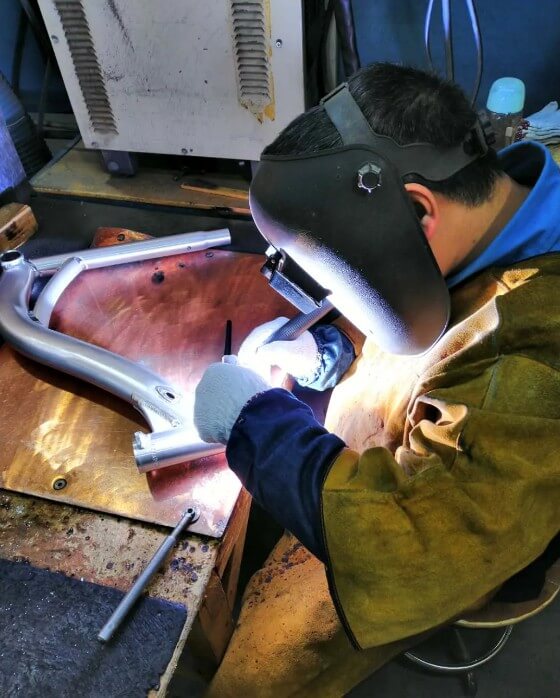
4.Main difficulties and common problems in welding cast aluminum
There are many challenges when welding cast aluminum. The following are the main difficulties and common problems:
(1) Porosity problem:
Porosity is prone to occur when welding cast aluminum. This is because aluminum alloys can dissolve a large amount of hydrogen in liquid state, but almost no hydrogen in solid state. During the welding process, the molten pool cools rapidly and hydrogen has no time to escape, thus forming pores. In addition, the oxide film on the surface of the welding material and the parent material and the high humidity of the environment will promote the formation of pores.
(2) Thermal crack tendency:
Thermal cracks are prone to occur when welding cast aluminum. This is because the linear expansion coefficient of aluminum alloy is large and the volume shrinkage rate is high during solidification, which leads to cracks under stress. Types of thermal cracks include longitudinal cracks, transverse cracks, arc crater cracks and root cracks.
(3) Softening of welded joints:
During the welding process, the heat-affected zone of cast aluminum is easy to soften, resulting in a decrease in joint strength. This is mainly because the welding heat weakens the strengthening effect of the base metal, and the aluminum alloy does not undergo phase transformation during heating and cooling, resulting in coarse grains that cannot be refined through phase transformation.
(4) Oxide film problem:
Aluminum is very easy to oxidize in the air, forming a dense aluminum oxide film with a melting point of up to 2060°C. This oxide film hinders the melting and fusion of the parent material, and is prone to defects such as slag inclusions, lack of fusion and lack of penetration. Before welding, the surface needs to be strictly cleaned by chemical or mechanical methods.
(5) Welding deformation:
Since the thermal conductivity and linear expansion coefficient of aluminum alloy are both large, heat is rapidly transferred during welding, resulting in deformation and large stress of the weldment. To reduce deformation, preheating, controlling welding specifications, and adopting anti-deformation and restraint measures can be taken.
(6) Burning of alloy elements:
High welding temperature will cause the alloy elements in cast aluminum to evaporate and burn, thereby affecting the mechanical properties and corrosion resistance of the weld.
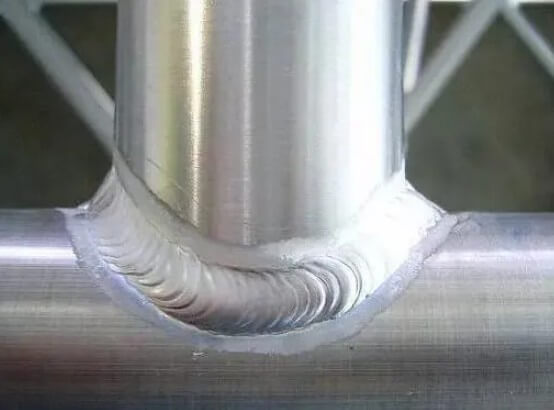
Summary:
In order to solve these problems, a series of measures need to be taken when welding cast aluminum, such as using appropriate welding processes (such as tungsten inert gas welding TIG, gas shielded welding MIG, stir friction welding FSW, etc.), thoroughly cleaning the workpiece and welding wire before welding, and using qualified shielding gas for protection during welding. In addition, due to its solid-phase connection characteristics, stir friction welding technology can effectively avoid the problems caused by traditional melting welding methods and become an ideal choice for aluminum alloy welding.
5.Material and equipment selection for welding cast aluminum
(1) Welding wire selection
Selecting the right welding wire is the key to ensuring welding quality. The selection of welding wire should be based on the composition of the base material and the expected welding performance. It is usually necessary to select aluminum alloy welding wire with a composition similar to or specific to the base material to ensure the strength of the welding area. For example, for L₂ pure aluminum welding, L₂ pure aluminum welding wire can be selected to ensure that the structure and mechanical properties of the weld metal such as strength are consistent with those of the parent material.
(2) Welding equipment
The selection of welding equipment is also crucial. It is necessary to equip a suitable welding machine and control system to ensure precise control of welding parameters. For example, TIG welding requires the use of tungsten electrodes and argon protection, while MIG welding requires the use of consumable welding wire and inert gas protection. In addition, the control system of the welding equipment should be able to accurately adjust parameters such as welding current, voltage and speed to meet different welding requirements.
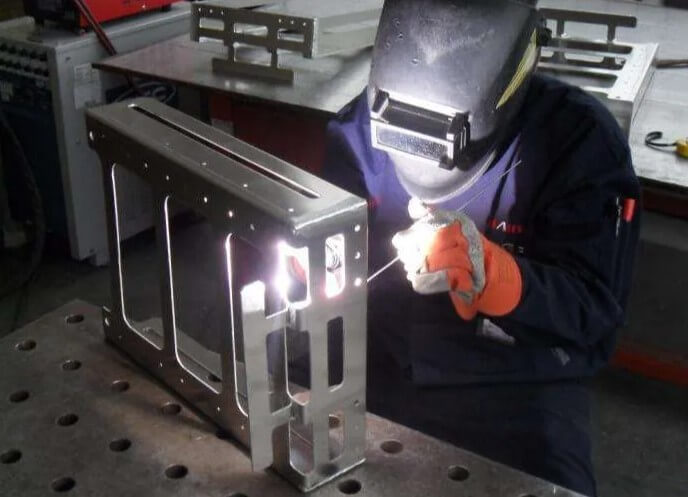
6.Preparation before welding cast aluminum and post-welding treatment
(1) Surface cleaning
Surface cleaning before welding cast aluminum is an important step to ensure welding quality. The oxide film and impurities in the welding area need to be thoroughly removed to ensure welding quality. Common cleaning methods include mechanical cleaning and chemical cleaning. Mechanical cleaning can use tools such as sandpaper and wire brushes, while chemical cleaning can use methods such as pickling.
(2) Welding design
Reasonable welding design is also the key to ensuring welding quality. It is necessary to rationally design the welding joint and select the appropriate welding groove form and size. For example, for thick-walled aluminum castings, V-shaped or U-shaped grooves can be selected to ensure the penetration of the weld. In addition, the planning of the welding sequence is also an important part of the welding design. Reasonable arrangement of the welding sequence can reduce welding deformation and stress concentration.
(3) Heat treatment
Aluminum castings often need to be heat treated after welding to eliminate the internal stress generated during the welding process and improve the mechanical properties of the welding area. The heat treatment process requires strict control of temperature and time to avoid causing other damage to the material. For example, annealing can effectively eliminate internal stress, but too high a temperature or too long a time may cause grain coarsening, thereby reducing the strength of the material.
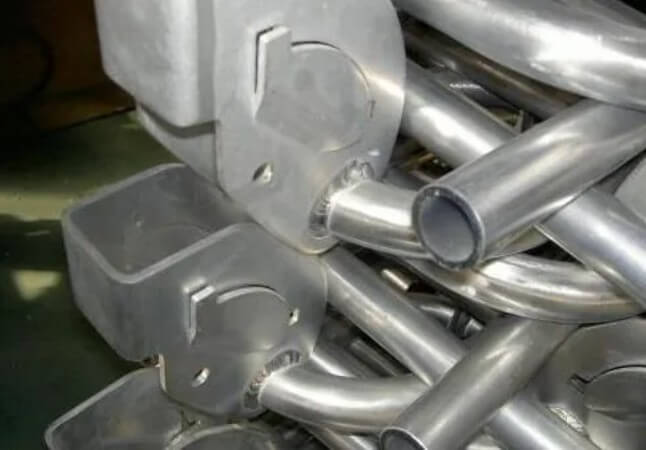
7.Optimization of aluminum casting welding process
(1) Selection of welding parameters
The selection of welding parameters has a direct impact on the welding quality. Parameters such as welding current, voltage, and speed need to be adjusted to optimize the welding effect. For example, for TIG welding, a smaller welding current and a lower welding speed can be selected to reduce the risk of welding deformation and cracks. For MIG welding, a larger welding current and a higher welding speed can be selected to improve welding efficiency.
(2) Welding sequence planning
Welding sequence planning is also an important part of welding process optimization. Reasonable arrangement of welding sequence can reduce welding deformation and stress concentration. For example, for large aluminum castings, a symmetrical welding sequence can be selected to reduce welding deformation. In addition, segmented welding is also an effective way to reduce welding stress.
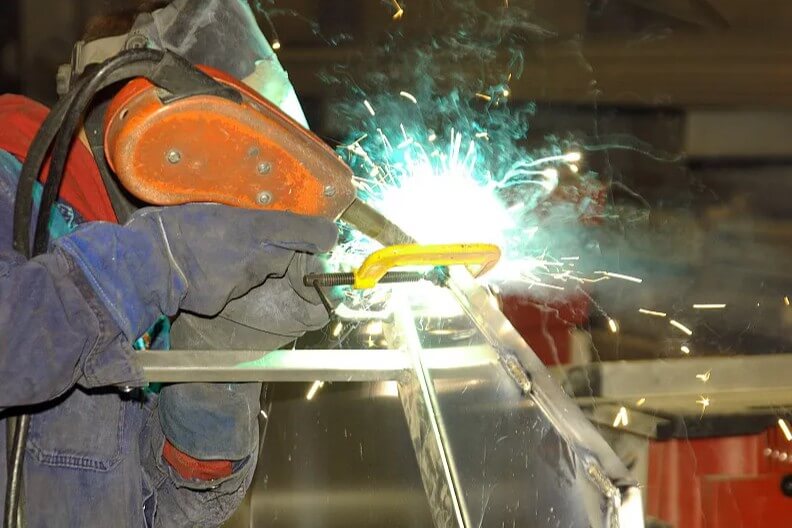
8.Summary
The difficulties in welding cast aluminum include the active chemical properties of aluminum and the occurrence of pores, deformation and other problems.The technical points of welding cast aluminum include the selection of appropriate welding methods, welding wires and equipment, treatment before and after welding, and strict control of welding parameters and welding sequence.

